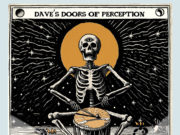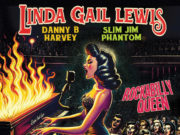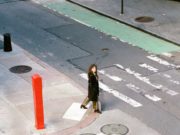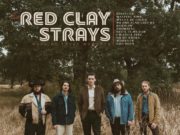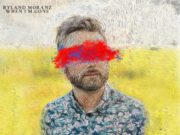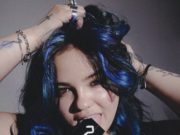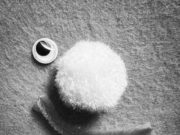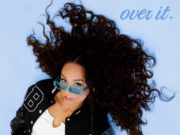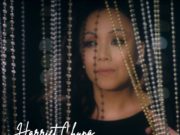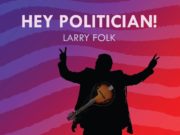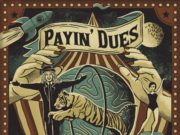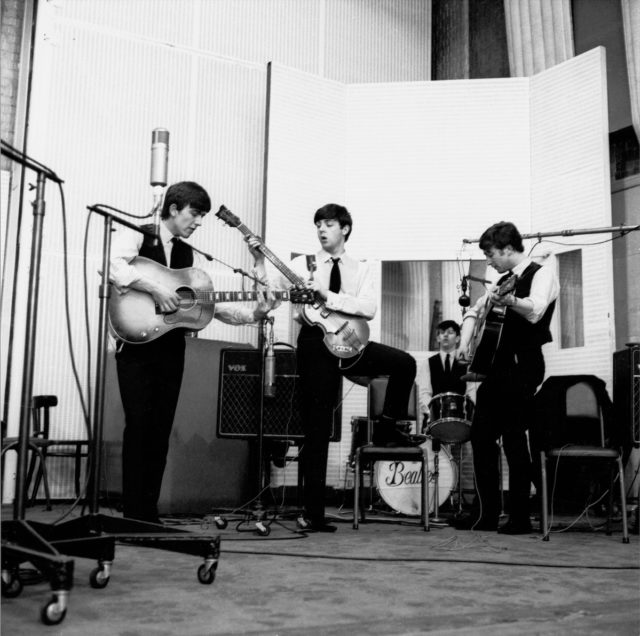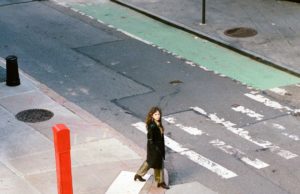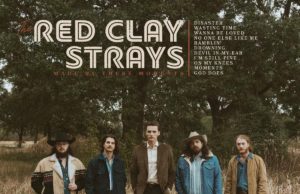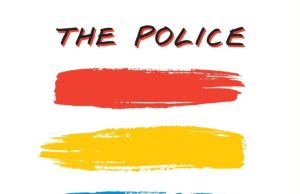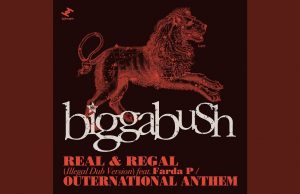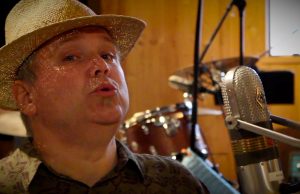 Chances are, when you think of Paul McCartney in a recording studio, an image of him and The Beatles in Abbey Road comes to mind. It’s true that the bulk of their most famous music was recorded there — but not all of it. In fact, did you know that in the late ’70s, frustrated with the famous studio being booked up solid, Paul had an exact replica built in the basement of his MPL offices in London? Millionaire rock stars have fewer roadblocks than the rest of us.
Chances are, when you think of Paul McCartney in a recording studio, an image of him and The Beatles in Abbey Road comes to mind. It’s true that the bulk of their most famous music was recorded there — but not all of it. In fact, did you know that in the late ’70s, frustrated with the famous studio being booked up solid, Paul had an exact replica built in the basement of his MPL offices in London? Millionaire rock stars have fewer roadblocks than the rest of us.
Anyway, there’s some neat stories surrounding the places Macca has recorded, so I thought I’d touch on as many of them as I could think of — drawing from the credits in my record collection.
Philips’ Sound Recording Services
38 Kensington, Liverpool, UK
The Quarrymen (guitarists Paul McCartney, George Harrison and John Lennon) record Buddy Holly’s That’ll Be The Day and an original McCartney-Harrison composition called In Spite Of All The Danger, in July 1958 at the home studio of Percy Phillips. John “Duff” Lowe played piano and Colin Hanton was on drums. A single mic was suspended from the ceiling. The songs were cut directly to a shellac 78 rpm acetate, which cost the teenagers less than a pound — specifically, seventeen shillings and sixpence. They could only manage 15 shillings, and had to come back the next day with the rest in order to take the disc home. This represents the first time McCartney was in a recording studio. The disc was lost until rediscovered by Lowe in 1981. He was going to auction it off, but sold it to McCartney for an undisclosed amount, who had it copied to tape, remastered, and got 50 replica copies pressed for friends at Christmas. This version was eventually released on Anthology 1 in 1995.
Phillips’ home at 38 Kensington in LIverpool is now a national historic site.
Akustik Studio
57 kirchenallee, Hamburg, Germany
The first time the famous Beatles lineup ever recorded together was a bit of a fluke. They were asked to be the backing band for a track by Lu Walters, who was the bass player in fellow Mersey band, Rory Storm & The Hurricanes while both bands were gigging in Hamburg. The Beatles’ usual drummer Pete Best wasn’t there, so Hurricanes drummer Ringo Starr sat in — putting John, Paul, George & Ringo together in a studio for the first time ever. Beatles bassist Stu Sutcliffe was present, but didn’t perform. Walters sang and played bass while the three remaining Beatles all played guitar on a rendition of George Gershwin’s Summertime. The acetate cut that day was lost and the tapes were likely taped over in the days or weeks which followed.
Friedrich-Ebert High School Gymnasium
Alter Postweg 30-38, Hamburg, Germany
The Beatles’ first recording session happened on June 22, 1961, backing Tony Sheridan and produced by Bert Kaempfert — who was already known for Wonderland By Night, but not yet Strangers In The Night or A Swingin’ Safari. My Bonnie, backed with The Saints (When The Saints Go Marching In) was released as a single in October ’61 and went to No. 5. The personnel was Sheridan on lead vocals and guitar solo, Lennon on rhythm guitar, McCartney on harmony & backing vocals and bass, Harrison on lead guitar, and Best on drums.
Decca Studios
165 Broadhurst Gardens, London, UK
The first time The Beatles were in a proper major-label recording studio was for their failed audition for Decca Records on New Year’s Day 1962. The affair was recorded, and five of the 15 tracks recorded on two-track tape (with no overdubs) were released on Anthology 1 in 1995. Twelve of the songs were covers — two of which were later re-recorded for Beatles albums (Money and Till There Was You). The originals recorded at Decca were Paul’s Like Dreamers Do and Love Of The Loved, and John’s Hello Little Girl. All three are on Anthology 1, but were never recorded for any Beatles studio albums. Cilla Black eventually recorded a version of Love Of The Love in 1963. Decca bought the building in 1937 from Crystalgate Gramophone Record Manufacturing, who had been using it as a studio since 1928. Decca was there until 1981, when the company was sold to Polygram and the facility closed. It is now known as Lilian Baylis House — used as a rehearsal space, and a protected national historic site.
Abbey Road Studios
3 Abbey Rd., London, U.K.
Known as EMI Recording Studio until it was re-named in 1976, Abbey Road was established as a recording studio in 1931. It was McCartney who came up with the idea to call The Beatles’ final album Abbey Road, and he’s the one who pitched the idea of the band walking across the nearby zebra crossing. The photo, taken at 11:35 a.m. on Aug. 8, 1969, was based on sketches by McCartney. The Beatles recorded the bulk of the music for all but one of their studio albums there. The first time was Sept. 4, 1962 to record their debut single, Love Me Do. The final time was Jan. 3, 1970, when Paul, Ringo and George gathered to finish up Harrison’s track I Me Mine for the Let It Be album. The last time they were all there together was Aug. 20, 1969 to record the Abbey Road track The End.
Regent Sound Studio
164-166 Tottenham Court Rd., London, U.K.
On Feb. 9, 1967, EMI Studios were booked and there was no room at the inn for The Beatles. So, they and producer George Martin decamped to Regent to record Fixing A Hole. They couldn’t bring along engineer Geoff Emerick because he was an EMI employee. They used Regent engineer Adrian Ibbetson instead.
Olympic Sound Studios
117 Church Rd., London, U.K.
With EMI Studios booked again on May 11, 1967, The Beatles went to the independent studio Olympic — popular with The Rolling Stones — to work on Baby You’re A Rich Man, which eventually showed up as the B-side to All You Need Is Love. Unlike Fixing A Hole, this track was recorded and mixed entirely away from EMI Studios.
De Lane Lea Studios
75 Dean St., London, U.K.
The Beatles spent four days at De Lane Lea recording Harrison’s LSD opus It’s All Too Much, for the Yellow Submarine soundtrack — May 25, 31 and June 1-2.
Chappell Recording Studios
52 Maddox St., London, U.K.
EMI Studios were again booked on Aug. 22, 1967, so the band headed to Chappell this time to work on Paul’s Your Mother Should Know, which would eventually appear on Magical Mystery Tour, though it was likely an early contender for inclusion in the Our World broadcast (they did Lennon’s All You Need Is Love instead). They were at Chappell again on Aug. 23 when manager Brian Epstein dropped in for a visit. He died five days later.
Trident Studios
17 St Anne’s Court., London, U.K.
The Beatles re-record new takes of Hey Jude on July 31, 1968 and wrap up recording there the following day. Mixing of Hey Jude also took place at Trident — stereo on Aug. 2 and mono mixing on Aug. 6. Several White Album sessions took place at Trident as well.
Apple Studios
3 Saville Row, London, U.K.
After the “hostile lethargy” experienced as the Beatles tried to rehearse new material on-camera for their Get Back (Let It Be) sessions at Twickenham Film Studio, they decided to abort the idea. Instead, on Jan. 15, 1969 they decided to rehearse and record at their new, unfinished studio in the basement of their Apple offices. Martin brought in two four-track tape recorders from EMI, which he and Glyn Johns set up and work began on Jan. 21.
Paul McCartney’s home
7 Cavendish Ave., London, U.K.
After the split, in the fall of 1969, McCartney and his new family fled to their farm in Scotland. They returned home to London just before Christmas and Paul arranged the delivery of recording equipment so he could begin recording what would be his first solo album at home. For this, he used a Studer four-track tape recorder and a single mic. There was no mixing console, so McCartney had no idea what his levels were. The first song he recorded was The Lovely Linda, which he had just written at the farm in Campelltown, Scotland. That Would be Something, Valentine Day, Junk, Teddy Boy, Glasses and Oo You were also recorded — or at least begun — this way, at home.
Morgan Studios
169-171 High Rd., London, U.K.
After a break to work on the last Beatles recording, McCartney brought his home tapes to Morgan Studios in Willesden on Feb. 12, 1970. The tapes were transferred to eight-track tape for overdubbing, and Paul recorded the tracks Kreen-Akrore and Hot As Sun. He moved again on to EMI Studios on Feb. 21 to finish recording and mix the album.
Columbia Studio B and D
49 East 52nd St., New York, N.Y.
Paul and Linda McCartney flew to New York City to begin work on their first album together, Ram, in Oct. 1970 and began recording on the 12th with drummer Denny Seiwell and guitarist Hugh McCracken. They began in Studio B and did vocals in Studio D before heading to the Scotland farm for Christmas.
A&R Recording Studios
799 7th Ave. New York, N.Y.
After Christmas, Paul and Linda returned to New York, this time at A&R Recording Studio, Room A1, to resume work on Ram from the second week of January through February 1971.
Sound Recorders Studio
6650 Sunset Blvd., Los Angeles, CA.
Paul and Linda again moved Ram sessions — this time to California in an effort to break through a funk in productivity. This is where the backing vocals were done and the album was mixed by Erik Wangberg in March and April, 1971.
Rude Studio
High Park Farm, Campbelltown, Scotland
The McCartneys began renovating their High Park retreat in Campbelltown, Scotland in 1970. Paul emptied a barn connected to the farmhouse and either installed his Studer from London, or a different four-track reel-to-reel machine, and dubbed the space Rude Studio. The rudimentary but cozy demo studio and rehearsal space is where rehearsals and demos for Wild Life were done in 1971.
Island Studios
8-10 Basing St., London, UK
McCartney opted to record Wings’ debut album Wild Life in the familiar surroundings of EMI Studios, but set out to make Red Rose Speedway at Olympic with Johns. McCartney and Johns fell out and the producer quit, so recording shifted to EMI Studios again — and the other familiar spots Morgan and Trident before the band finished up at a new haunt, the Notting Hill studios at the offices of Island Records, located in a deconsecrated church. Studio One was 60 by 40 feet, with 25-foot ceilings and could accommodate 80 musicians. The smaller Studio Two was in the basement, and featured a 30 by 20 foot space, with 10 foot ceilings. Renamed Basing Street Studios in 1976, it was one of the first to offer 16-track recording.
EMI Studios
8 Wharf Road, Lagos, Nigeria
After his lead guitarist Henry McCullough and drummer Seiwell quit, the McCartneys and Denny Laine wanted to get out of Dodge. They discovered EMI owned studios all over the world, so they looked for one somewhere they’d never been — and found it in Nigeria. They packed and left, not realizing there was an active travel advisory there due to a cholera outbreak in Africa’s most-populous country. They arrived on Aug. 9, 1973 and recorded seven songs over the course of three weeks. There were monsoons, power outages, loads of bugs and Paul had a health scare and got mugged — forever losing the original demos of the songs they were there to record.
AIR Studios
214 Oxford St., London, U.K.
Two weeks after returning from Lagos, Wings set up atMartin’s AIR (Associated Independent Recording) Studios in London. They transferred the eight-track recordings to 16-track and recorded Jet from scratch. All the orchestrations for Band On The Run were recorded at AIR in a single day — conducted by Tony Visconti, who was given three days to come up with the arrangements. The album was mixed at Kingsway Recorders within De Lane Lea Studio, where The Beatles had done It’s All Too Much.
The Sound Shop
1307 Division St. Nashville, TN
Wings — with new drummer Geoff Britton and new lead guitarist Jimmy McCulloch — flew to Nashville to vacation, jam with local musicians, rehearse and record. Over the course of seven weeks, they cut the single Junior’s Farm at the (now razed) Sound Shop studio. They also did a cover of one of Paul’s late father’s (Jim McCartney) songs — Walking In The Park With Eloise, which was released under the pseudonym The Country Hams. Additionally, Sally G — the B-side of Junior’s Farm — was recorded, along with eight others either fully, partially or just mixing sessions.
Saint-Sea Studios
3809 Clematis St., New Orleans, LA
Wings recorded three songs at EMI Studios for their next album, Venus & Mars before flying to New Orleans to record the bulk of the record at at studio co-owned by musician Allen Toussaint, who played piano on Rock Show. The sessions were fruitful and not only produced enough material for the very successful album, but put a slew of material in the can for B-sides and future use. The band now consisted of the McCartneys, Laine, McCulloch and drummer Joe English.
Fair Carol Yacht
Watermelon Key, Virgin Islands
Wings started work on London Town in February 1977 at the newly renamed Abbey Road Studios — where they’d recorded Speed Of Sound the year before. Five tracks were done there until it was discovered Linda was pregnant. Plans for another major tour were scrapped and instead the band took Laine’s suggestion to record the rest of the album, leisurely, on a boat. They recorded on the moored Fair Carol during May 1977 — but Wings again suffered defections of their lead guitarist and drummer.
Spirit of Ranachan Studio
Low Ranachan, Scotland
In 1971, McCartney bought the neighbouring 400-acre farm near his High Park property. By the late ’70s he had created a temporary studio space there, dubbed Spirit Of Ranachan. A 24-track recording facility was built inside a converted barn and the final version of Wings (McCartneys, Laine, Lawrence Juber on lead guitar and Steve Holly on drums) began work on Back To The Egg there in June 1978, but it was first used to record the single Mull Of Kintyre on Aug. 9, 1977 during a break in the London Town sessions.
Lympne Castle
Hythe, Kent, U.K.
In September 1978, Wings had a mobile recording unit from London’s RAK Studios set up at the historic Lympne Castle — a sprawling medieval property dating back to the 1360s. Over the course of a month, the band recorded in the kitchen, the stairwell, the spiral staircase and the main hall. Holly’s drums were set up in the fireplace of the great hall. The castle’s owners Diredre and Harold Margary provided bits of spoken word for Back To The Egg heard in the tracks Reception and The Broadcast.
Replica Studio
1 Soho Square, London U.K.
In The Beatles days, when Abbey Road studio was unavailable, the band relocated to a different studio. But, in November 1978, Paul decided he didn’t want to wait and simply used his own money to build an exact replica of Abbey Road Studio 2 in the basement of his MPL offices in Soho Square.
Blossom Wood Farm
Peasmarsh, East Sussex, U.K.
McCartney bought his home in East Sussex in 1973 to be larger than his place in London, and less rustic than his one in Scotland — because he had five children to raise. He wrote countless songs here, but also recorded a great deal of McCartney II there between June and August 1979. To do this, he rented a 16-track machine, some microphones and recorded around the house — including the kitchen and bathroom.
AIR Studios
St. Peter, Montserrat
McCartney and Wings began work on Tug Of War and Pipes Of Peace at Martin’s AIR Studios in London in December 1980, but the sessions were disrupted by the assasination of Lennon on Dec. 8. A decision was made to postpone until everyone was ready. By that time, there was no more Wings, so McCartney headed to Martin’s other AIR Studios facility on the Caribbean island of Monterrat and recorded there from Feb. 3, to March 2, 1981.
The studio boasted a 46-channel Neve console, a pair of MCI 24-track recorders, three Ampex ATR-102 stereo machines and an MCI synchronizer (for any 46-track work), with JBL and Tannoy monitors. Hurricane Hugo devastated the island in 1989 and tore the roof off the building. The last album recorded there was Steel Wheels by The Rolling Stones.
Cherokee Studios
5241 Melrose Ave., Los Angeles, CA
Mccartney and Michael Jackson began work on Say Say Say at AIR London, and finished up in March and April 1982 at Cherokee Studios in L.A. It was likely recommended to Paul by Martin, who has called Cherokee the best studio in the U.S.
Hog Hill Studio
Rye, East Sussex, U.K.
In 1981, McCartney bought Hogg Hill Mill, an 18th-century windmill, near his Peasmarsh property, with the intention of turning it into a proper home studio — similar to AIR. This has been Mccartney’s main studio ever since — and where the surviving Beatles did Free As A Bird and Real Love for Anthology in 1995. The windmill structure has been renovated for rehearsal space while the main building houses his studio, with an office upstairs.
Westlake Recording Studios
7265 Santa Monica Blvd, West Hollywood, CA
Jackson’s studio of choice, and where he recorded Thriller. No surprise, then, this is where he and McCartney recorded The Girl is Mine from April 14 to 16, 1982.
The Hit Factory
31-37 Whitfield St., London, U.K.
All of McCartney’s Off The Ground album was recorded at The Mill, except overdubs on his ode to Linda Golden Earth Girl, which were done at The Hit Factory on May 18, 1992.
Sun Valley Studio
State Highway 75, Ketchum, ID
Paul and Linda spent a couple weeks at Steve Miller’s home studio in late February 1995, recording Young Boy with him, before finishing it up over the course of 10 days back at Hog Hill. Miller has since sold his $16 million home in Sun Valley, Idaho — and its 400-square foot studio.
Henson Recording Studios
1416 N. La Brea Ave., Los Angeles, CA
The historic Hollywood studio was formerly A&M Studios from 1966 to 1999, but was famously established in 1917 by Charlie Chaplin and operated as Chaplin Studios until 1953. McCartney recorded parts of four albums there — Driving Rain from February to June, 2001, Memory Almost Full there in 2006, New (with Giles Martin) in the spring of 2013, and Egypt Station. This is also the studio where the all-star benefit single We Are The World was recorded.
Ocean Way Recording
6050 Sunset Blvd., Los Angeles, CA
Dubbed “the Abbey Road of the West Coast,” McCartney recorded part of his album Chaos and Creation in the Backyard with Nigel Godrich at Ocean Way in April and September, 2004.
Capitol Studios
1750 Vine St, Los Angeles, CA
McCartney recorded some of Kisses On The Bottom at the historic Studio A in the Capitol Tower in Hollywood, at the suggestion of producer Tommy LiPuma, who also had McCartney record at Avatar Studio (formerly Power Station) from April to May, 2011.
Avatar Studios
441 West 53rd St., New York City
Formerly, and perhaps best known as Power Station, McCartney recorded some of Kisses On The Bottom here in April-May, 2011.
KLB Studios
1104 Rua Visconde de Porto Seguro, São Paulo, Brazil
In October 2017, McCartney travelled to Brazil to record the song Back In Brazil for the Egypt Station album with producer Greg Kurstin. Macca plays nine instruments on the track.
• • •
Area Resident is an Ottawa-based journalist, recording artist, music collector and re-seller. Hear (and buy) his music on Bandcamp, email him HERE, follow him on Instagram and check him out on Discogs.


